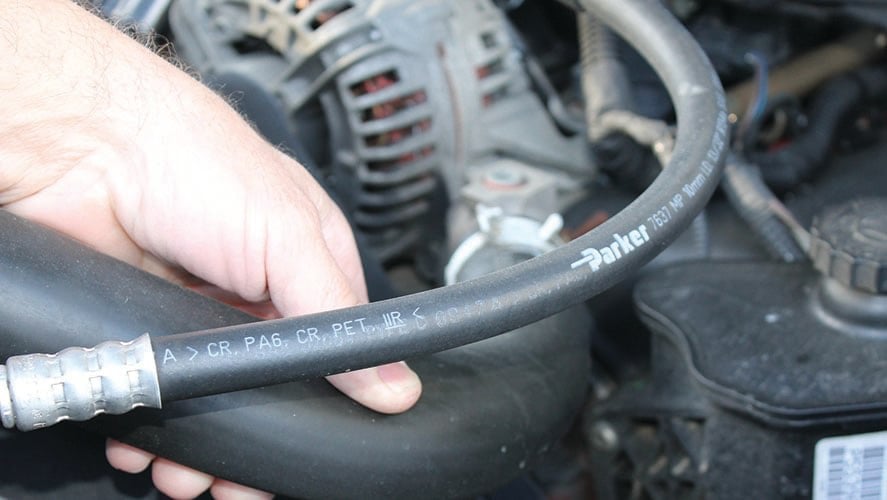Setting and hitting appropriate Gross Profit Margins (GPMs) can significantly impact your repair shop's long-term success. This crucial metric reflects the percentage of revenue that remains after the cost of goods sold (COGS) is subtracted. So, how do you start monitoring your GPM?
CSI Accounting & Payroll has helped auto repair shops with their accounting since the 1960s, specializing in your industry since the day we started! We know the metrics that matter the most to keep an eye on (like your GPM) as well as how you can track them. Let's explore the significance of GPMs for auto repair shops, based on these questions commonly asked by other repair shop owners:
- How do I calculate my current GPM?
- What is the ideal GPM?
- How do I improve my GPM?
Calculating Your Gross Profit Margin
To calculate the Gross Profit Margin for an auto repair shop, you need to know the total revenue generated from parts sales and the total cost of those parts. Plug that into this formula:
Gross Profit Margin = (Revenue - Cost of Goods Sold) / Revenue x 100
Here, "revenue" refers to the total amount of money generated from the sale of parts, and "cost of goods sold" refers to the total cost of acquiring those parts from suppliers. With the right margin, you can cover your costs, make a reasonable profit, and remain competitive in the marketplace.
The Ideal Gross Profit Margin
What is the ideal GPM for auto repair shops? It depends on:
- The location of the shop
- The types of services offered
- The competitive landscape in the local market
Generally, your industry aims for around 20-50% on the sale of parts. (However, with recent economic changes, this percentage should be shifted higher.) Then, you'll want around 75% on labor. It should be a larger payroll margin than other small businesses because your business is more labor-intensive.
Remember, finding your ideal GPM can be trial and error! Matrix pricing and other best practices can help, which we cover in the next section.
How to Improve Profit Margins
Our accountants have found that when working with auto repair shop clients, we reach a higher overall GPM when using proper matrix pricing. For a breakdown of parts price ranges and their associated markups, plus labor markups to pair the parts model with, download our free Matrix Pricing Template here!
What else can you do? Try the following best practices:
- Set diagnostic rates equal to labor rates.
- Implement matrix pricing for parts.
- Factor drive time before and after repair work into the work order.
- Charge for shop supplies and environmental fees.
- Negotiate with vendors on parts and supplies.
- Track inventory to reduce parts theft.
- Evaluate labor rate increases on a periodic basis.
- Find opportunities to raise average repair orders.
- Focus on customer service to retain quality customers.
- Track the productivity of technicians and service writers.
- Invest in top talent and training.
- Develop plans for growth.
- Outsource accounting activities.
These best practices require owners to stay out from under the hood to monitor the health of their business. If you structure your GPM goals accordingly and track your sales and cost activity, your focus can shift to maximizing volume based on potential per service bay.
Get Tailored Advice on Optimizing Your Profitability
Properly increasing your Gross Profit Margin in an auto repair shop may be easier said than done, but now that you know how to calculate your GPM, what GPM to shoot for, and how to improve it through various strategies (such as implementing matrix pricing), you have a place to get started.
However, finding the right approach for your business requires a deep understanding of your operations, customer base, and local market dynamics. At CSI Accounting & Payroll, we specialize in helping repair shops optimize their profitability with tailored advice based on your finances, taking your unique needs and goals into account.
Schedule a free consultation to find out if we can be a good fit for your business by clicking the button below:
Not ready to talk? That's okay! If you're looking for more tips to boost your shop's performance, download our free eBook, Quick Tips for Automotive Repair Shops, by clicking the image below:
Brian Paulson
Brian is the owner of CSI Accounting & Payroll. After earning a double major in Accounting and Financial Management from the University of North Dakota, he joined CSI in 1996 and purchased it in 2002. With decades of experience, Brian now focuses on education: contributing to professional associations and business books, actively participating in continued learning for his team, and, of course, sharing transparent insights on CSI’s website.






